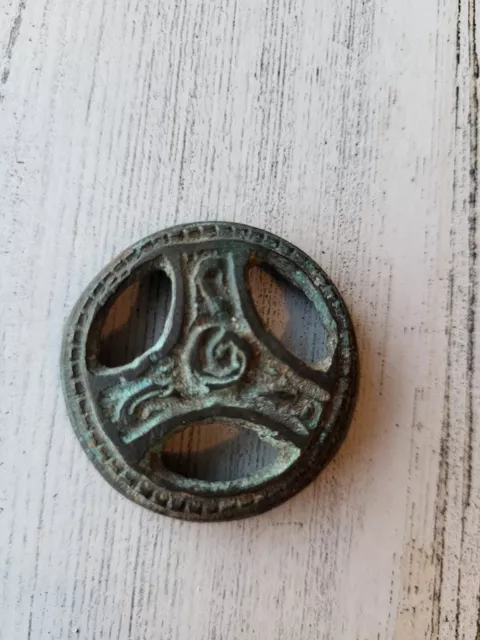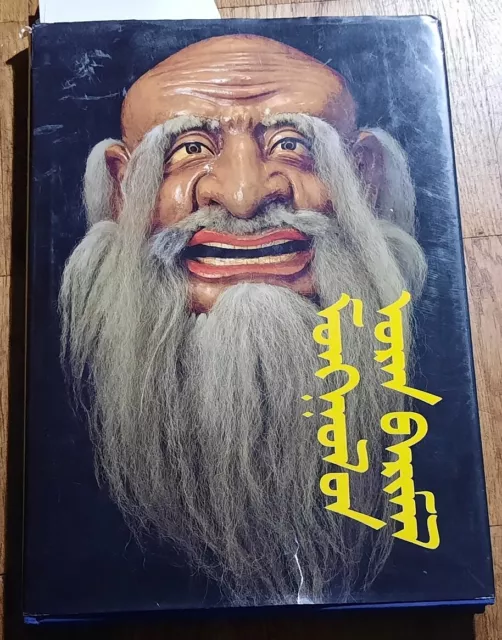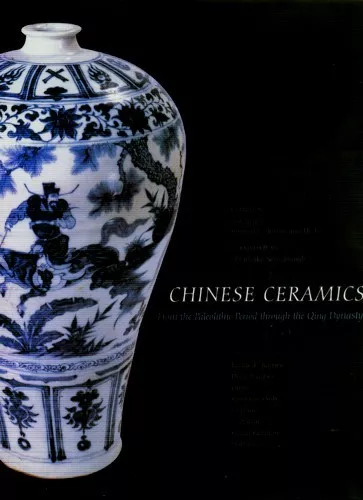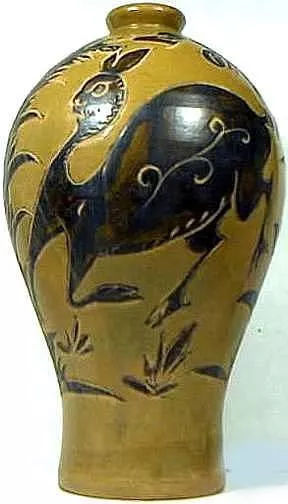Ancient Antique Yuan Mongol China Painted Glazed Carved Deer Ceramic Vase 1300AD
Exceptionally Well Preserved Genuine Ancient Medieval Mongol Hand Painted, Incised (Engraved) and Glazed Brown and Green Ceramic Vase Depicting Running Deer.
CLASSIFICATION: Glazed Painted Incised Ceramic Vase.
ATTRIBUTION: Ancient China, Yuan Dynasty (1275-1368 A.D.).
SIZE/MEASUREMENTS:
Height: 224 millimeters (9 inches)
Diameter: 131 millimeters (5 1/4 inches) at bowl; 38 millimeters (1 1/2 inches) at top lip; 78 millimeters (3 1/8 inches) at base.
CONDITION: Exceptionally good. The normal potting blemishes associated with hand produced ancient ceramics (warts and dimples, zits and pits). One small chip at base (repairable upon request). No cracks, no breakage, and absolutely original and unrepaired. Quite remarkable, fairly rare, and very handsome.
DETAIL: A very handsome, remarkably well preserved, glazed ceramic jar from the Yuan Dynasty of Ancient China. It is a fairly large-sized vessel, the upper bowl alone the size of a cantaloupe melon. Overall it is about the size of a bedroom side-table lamp base. Painted a quite characteristic dark brown atop a green-tan colored background, the glaze remains almost entirely intact, uncommon for a jar approximately 700 years old. As you can see, the center of the jar’s bowl (on both sides) is painted with a large well executed deer loping through foliage and brush; wonderfully animated and with a quite cute expression. All of the borders between the dark brown foreground and the tannish-green back ground are incised (engraved). There is very little of the typical crazing/crackling of the glaze, which so often heavily afflicts antique ceramic glazed vessels such as this. And although a tiny little bit of the glaze is worn away, it is due to wear – not to decomposition of the glaze.
There is one chip at the base of the vase, as you can see. We can have this repaired – without cost – if you would like. Some prefer no repairs – others prefer cosmetic repairs – and we are happy to accommodate whichever is your preference. This is really in very good condition given its age and origin. Overall the glaze remains brightly colored and glossy. It possesses the normal blemishes (warts and dimples, zits and pits) one expects with ancient handcrafted earthenware. However these are all potting blemishes the vessel was “born” with - there is no damage, no cracks, no breakage, no repairs, and no chippings other than the single chip described and pictured. It is about as close to perfect as you will ordinarily find of an authentic vase like this. Of course realistically one would expect some blemishes after being buried for seven centuries, and there are no surprises here except that there are so few blemishes.
There are a series of riblets visible, running from the top to bottom of the vase, visible even beneath the glaze. These are the marks of the potter of course, the result of being turned on a wheel, adding character to the piece. Overall it is an exceptionally attractive piece, and extraordinarily well preserved specimen of the ancient Chinese art of pottery. If you’d like an authentic ancient glazed earthenware vase to proudly display, you could not go wrong with this one. It is solidly shaped, nicely featured, and perfectly proportioned. It’s certainly not the ordinary jar of the era, and it is still very distinctive and handsome. Filled with dried flowers or wrapped hard candies and it would be very special. You could display this one with great pride either at work on your desk or at home. Either way, it will certainly generate curiosity and perhaps even a little envy!
HISTORY OF YUAN CERAMICS: The Mongol invasion of China led to the fall of the Song Dynasty, the rise of the Mongol Yuan Dynasty (1279-1368 A.D.), and a more cosmopolitan view of the world, broadening horizons and significantly altering Chinese. Important advances in porcelain techniques included underglaze porcelain; ground cobalt was mixed with water and painted on an unfired piece of porcelain. In the kiln, the blackish pigment turned a rich shade of blue, thus creating the famous tradition of blue-and-white ware. For centuries blue and white porcelain was produced not only for markets in China, but for export to the Muslim Middle East and Europe. Copper oxide was also used successfully as a decorative agent in the same way, creating the class of porcelains known as underglaze red. A growing demand for Chinese ceramics in the Middle East stimulated the Mongol rulers to boost ceramic output for export. Though the Mongol Yuan Dynasty was short-lived, it had a profound effect on the history of porcelain production for the next 600 years.
HISTORY OF THE YUAN DYNASTY: The history of the Yuan Dynasty (1275-1368 A.D.) is of Mongol rule – the first alien dynasty to rule China. By the mid-thirteenth century the Mongols under Kublai Khan, grandson of Genghis Khan, had conquered North China, Korea, the Muslim kingdoms of Central Asia - even twice penetrating Europe. With the resources of a vast empire, Kublai Khan turned his ambition against the Southern Sung Dynasty, which subsequently collapsed in 1279 A.D. Under the Mongol Yuan Dynasty, the Central Asian trade routes were entirely under Mongol control and more secure than ever before. Commercially oriented infrastructure improvements encouraged overland as well as maritime commerce.
Reciprocal trade between West and East increased correspondingly, and the increased contact with Western Asia and Europe brought about an enhanced degree of cultural exchange. The cultural diversity resulted in the development of drama, written novels, and increased use of the written language. Western musical instruments were introduced enriching performing arts. Advances were realized in the fields of travel literature, cartography and geography, and scientific education. Certain key Chinese innovations, such as printing techniques, porcelain production, playing cards, and medical literature, were introduced in Europe, while the production of thin glass and cloisonne became popular in China.
The first records of travel to China by Westerners date from this time, the most famous of course by Venetian Marco Polo. The Mongols undertook extensive public works. Roads, communications, and water distribution were reorganized and improved. Granaries were ordered built throughout the empire against the possibility of famines. As the terminus of a completely renovated Grand Canal, Beijing was rebuilt with new palace grounds that included artificial lakes, hills and mountains, and parks. Nonetheless discontent grew within China as Confucian officials and scholars resented Mongol restrictions against Chinese holding important offices. Inflation and oppressive taxes alienated Chinese peasants. During the 1330’s and 1340’s crop failures, famine, and the repeated flooding of several major rivers in North China led to uprisings in almost every province, and several major rebel leaders emerged. Aided by rivalry amongst competing Mongol heirs to the thrown, in the 1360s a former Buddhist monk turned rebel army leader was successful in extending his power throughout the Yangtze Valley and eventually overthrew the Mongol Yuan Dynasty.
HISTORY OF CHINESE EARTHENWARE: The first Chinese ceramics archaeologists have found date back more than 10,000 years. These were earthenware, which means they were made from clay and fired at the kind of low temperatures reached by a wood fire or simple oven. In China, most ceramics made before the Tang dynasty (600 A.D.) are earthenware. They may be glazed or unglazed, and are occasionally painted, often brightly colored. Stoneware ceramics are harder and less porous than earthenware and are fired at hotter temperatures—between 2100°F and 2400°F. At these high temperatures, the surface of the clay melts and becomes glassy. Although stoneware is usually waterproof, most stoneware ceramics are glazed for decoration. The glazes often contain ash, which allows the glaze to harden at stoneware temperatures.
During the Shang Dynasty (1600-1100 B.C.) bronze metallurgy superseded ceramics as the favored art form of the ruling class. However both the ceramic and the bronze industries evolved into complex systems of production that were supported by the aristocracy. Decorative designs rich in symbolism were created first in bronze were then imitated in clay. Chinese burial customs included the tradition of placing clay replicas of material possessions, animals and people in the tomb to accompany the deceased and serve them in the next life. Although archaeological finds have revealed that glazed pottery was produced as early as 1100 B.C. during the Zhou dynasty, the production of glazed wares was not common until about 200 B.C. during the Han Dynasty. However from about 1000 B.C. onward during the Shang and Zhou dynasties, primitive porcelain wares emerged. Real porcelain wares appeared in the Han dynasty around 200 A.D. In the process of porcelain development, different styles in different periods blossomed.
The production of porcelain became widespread by about 500 A.D. Using a special clay with ground rock containing feldspar, a glassy mineral, the material was fired at very high temperatures above 2400°F. The surface of the clay melts at such high temperatures and becomes smooth as glass. Early porcelains were undecorated and were used by the Imperial court and exported as far as the Middle East. For instance during the Han Dynasty principally celadon (green) and black porcelain were mainly produced. The famous blue and white porcelain was created with blue paint made from cobalt and then covered with a clear glaze, which can withstand the high temperatures of the kiln. The technical and creative innovations of Chinese potters are unique accomplishments in the cultural heritage of the world. Today, archaeological excavation and research in China are revealing new sites and new examples of the genius of the Chinese potter.
HISTORY OF CHINESE CIVILIZATION: Remains of Homo erectus , found near Beijing, have been dated back 460,000 years. Recent archaeological studies in the Yangtse River area have provided evidence of ancient cultures (and rice cultivation) flourishing more than 11,500 years ago, contrary to the conventional belief that the Yellow River area was the cradle of the Chinese civilization. The Neolithic period flourished with a multiplicity of cultures in different regions dating back to around 5000 B.C. There is strong evidence of two so-called pottery cultures, the Yang-shao culture (3950-1700 B.C.) and the Lung-shan culture (2000-1850 B.C). Written records go back more than 3,500 years, and the written history is (as is the case with Ancient Egypt) divided into dynasties, families of kings or emperors. The voluminous records kept by the ancient Chinese provide us with knowledge into their strong sense of their real and mythological origins – as well as of their neighbors.
By about 2500 B.C. the Chinese knew how to cultivate and weave silk and were trading the luxurious fabric with other nations by about 1000 B.C. The production and value of silk tell much about the advanced state of early Chinese civilization. Cultivation of silkworms required mulberry tree orchards, temperature controls and periodic feedings around the clock. More than 2,000 silkworms were required to produce one pound of silk. The Chinese also mastered spinning, dyeing and weaving silk threads into fabric. Bodies were buried with food containers and other possessions, presumably to assist the smooth passage of the dead to the next world. The relative success of ancient China can be attributed to the superiority of their ideographic written language, their technology, and their political institutions; the refinement of their artistic and intellectual creativity; and the sheer weight of their numbers.
A recurrent historical theme has been the unceasing struggle of the sedentary Chinese against the threats posed by non-Chinese peoples on the margins of their territory in the north, northeast, and northwest. China saw itself surrounded on all sides by so-called barbarian peoples whose cultures were demonstrably inferior by Chinese standards. This China-centered ("sinocentric") view of the world was still undisturbed in the nineteenth century, at the time of the first serious confrontation with the West. Of course the ancient Chinese showed a remarkable ability to absorb the people of surrounding areas into their own civilization. The process of assimilation continued over the centuries through conquest and colonization until what is now known as China Proper was brought under unified rule.
SHIPPING & RETURNS/REFUNDS: Due to its fragile nature this particular piece is only shipped in an oversized box with lots of Styrofoam peanuts. The shipping weight of this item is 5 pounds. Additional items shipped together do result in a discount. We can add most other items we offer to the shipment for only $0.99 each. Your purchase will ordinarily be shipped within 48 hours of payment. We package as well as anyone in the business, with lots of protective padding and containers. All of our shipments are fully insured against loss, and our shipping rates include the cost of this coverage (through stamps.com, Shipsaver.com, the USPS, UPS, or Fed-Ex).
International tracking is provided free by the USPS for certain countries, other countries are at additional cost. We do offer U.S. Postal Service Priority Mail, Registered Mail, and Express Mail for both international and domestic shipments, as well United Parcel Service (UPS) and Federal Express (Fed-Ex). Please ask for a rate quotation. Please note for international purchasers we will do everything we can to minimize your liability for VAT and/or duties. But we cannot assume any responsibility or liability for whatever taxes or duties may be levied on your purchase by the country of your residence. If you don’t like the tax and duty schemes your government imposes, please complain to them. We have no ability to influence or moderate your country’s tax/duty schemes.
If upon receipt of the item you are disappointed for any reason whatever, I offer a no questions asked 30-day return policy. Send it back, I will give you a complete refund of the purchase price; 1) less our original shipping/insurance costs, 2) less non-refundable eBay payment processing fees. Please note that eBay does NOT refund payment processing fees. Even if you “accidentally” purchase something and then cancel the purchase before it is shipped, eBay will not refund their processing fees. So all refunds for any reason, without exception, do not include eBay payment processing fees (typically between 5% and 15%) and shipping/insurance costs (if any). If you’re unhappy with eBay’s “no fee refund” policy, and we are EXTREMELY unhappy, please voice your displeasure by contacting eBay. We have no ability to influence, modify or waive eBay policies.
ABOUT US: Prior to our retirement we used to travel to Europe and Central Asia several times a year. Most of the items we offer came from acquisitions we made in Eastern Europe, India, and from the Levant (Eastern Mediterranean/Near East) during these years from various institutions and dealers. Much of what we generate on Etsy, Amazon and Ebay goes to support The Hermitage Museum in St. Petersburg, as well as some other worthy institutions in Europe and Asia connected with Anthropology and Archaeology. Though we have a collection of ancient coins numbering in the tens of thousands, our primary interests are ancient jewelry and gemstones. Prior to our retirement we traveled to Russia every year seeking antique gemstones and jewelry from one of the globe’s most prolific gemstone producing and cutting centers, the area between Chelyabinsk and Yekaterinburg, Russia. From all corners of Siberia, as well as from India, Ceylon, Burma and Siam, gemstones have for centuries gone to Yekaterinburg where they have been cut and incorporated into the fabulous jewelry for which the Czars and the royal families of Europe were famous for.
My wife grew up and received a university education in the Southern Urals of Russia, just a few hours away from the mountains of Siberia, where alexandrite, diamond, emerald, sapphire, chrysoberyl, topaz, demantoid garnet, and many other rare and precious gemstones are produced. Though perhaps difficult to find in the USA, antique gemstones are commonly unmounted from old, broken settings – the gold reused – the gemstones recut and reset. Before these gorgeous antique gemstones are recut, we try to acquire the best of them in their original, antique, hand-finished state – most of them centuries old. We believe that the work created by these long-gone master artisans is worth protecting and preserving rather than destroying this heritage of antique gemstones by recutting the original work out of existence. That by preserving their work, in a sense, we are preserving their lives and the legacy they left for modern times. Far better to appreciate their craft than to destroy it with modern cutting.
Not everyone agrees – fully 95% or more of the antique gemstones which come into these marketplaces are recut, and the heritage of the past lost. But if you agree with us that the past is worth protecting, and that past lives and the produce of those lives still matters today, consider buying an antique, hand cut, natural gemstone rather than one of the mass-produced machine cut (often synthetic or “lab produced”) gemstones which dominate the market today. We can set most any antique gemstone you purchase from us in your choice of styles and metals ranging from rings to pendants to earrings and bracelets; in sterling silver, 14kt solid gold, and 14kt gold fill. When you purchase from us, you can count on quick shipping and careful, secure packaging. We would be happy to provide you with a certificate/guarantee of authenticity for any item you purchase from us. There is a $3 fee for mailing under separate cover. I will always respond to every inquiry whether via email or eBay message, so please feel free to write.
- Condition: Ancient China, Mongol Yuan Dynasty (1275-1368 A.D.).
PicClick Insights - Ancient Antique Yuan Mongol China Painted Glazed Carved Deer Ceramic Vase 1300AD PicClick Exclusive
- Popularity - 5 watchers, 0.0 new watchers per day, 1,280 days for sale on eBay. Super high amount watching. 1 sold, 0 available.
- Best Price -
- Seller - 5,445+ items sold. 0% negative feedback. Great seller with very good positive feedback and over 50 ratings.
People Also Loved PicClick Exclusive

Ancient Scythian Ordos Xiongnu Mongol Culture Bronze Amulet Horned Owl Deity
$688.99 Buy It Now 20d 11h
Ancient Ordos Xiongnu Mongol Culture Bronze Amulet
$99.99 0 Bids or Buy It Now 5d 2h
Mongolia Folk Art Album Old National Painting Mongol MNR Jewelry Coral Clothes
$89.76 Buy It Now 17d 22h
Mongol MNR Propaganda Sign BADGE Pin Flag Enamel Mongolia Bike Race bicycle Old
$30.15 Buy It Now 29d 3h
Mongolia Folk Art Album Old National Mongol MNR Statue Sculpture Buddha Deity vt
$75.23 Buy It Now 19d 12h 7 watchers
7 watchersChinese Ceramics Paleolithic Qing Ming Mongol Yuan Song Han Tang Sui Sancai NEW
$499.99 Buy It Now
Chinese Porcelain Ming Mongol Yuan Song Tang Jin Sui Liao Zhou Xia Khitan Manchu
$32.99 Buy It Now


